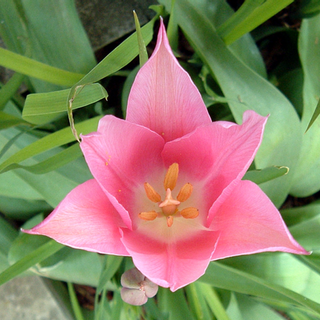
Podcast: Play in new window | Download (Duration: 5:40 — 4.4MB)
Subscribe: Google Podcasts | Spotify | Android | RSS | More
 As ever, I’m taking a little break and bringing you some repeats from 2015. This one is prompted by an episode of NPR’s Planet Money that I’ve just listened to. They decided to cook a peacock for reasons that I think had something to do with the role of spices in global trade and the birth of capitalism in the 17th century. And who should they call on as their expert guide but Christianne Muusers.
As ever, I’m taking a little break and bringing you some repeats from 2015. This one is prompted by an episode of NPR’s Planet Money that I’ve just listened to. They decided to cook a peacock for reasons that I think had something to do with the role of spices in global trade and the birth of capitalism in the 17th century. And who should they call on as their expert guide but Christianne Muusers.
Long time listeners may remember that it was almost a year ago that I met Christianne at the 2nd annual Amsterdam Symposium on the History of Food. We talked about the very antithesis of conspicuous consumption represented by a heavily-spiced peacock pie: tulip bulb soup, which kept some Dutch people alive through the hunger winter of 1943–44.
The Amsterdam Food Symposium takes place again next week, on 15 and 16 January 2016. Unfortunately I really don’t think I can afford to go this year, which is a great shame.
Notes
- Details of the Symposium here.
- Christianne Muusers’ site is called Coquinaria and there’s some more information on tulip bulbs as food from Green Deane.
- The tulip in the photo is China Pink, and I took it. The banner photo shows some Dutch ration coupons, from Wikimedia.
- Thanks for the inspiration to Planet Money’s We cooked a peacock, especially if it brings in a few listeners.

 Maybe you’ve read about experiments that show that when potato crisps crunch louder, people say they’re fresher. And beyond crisps, all sorts of taste sensations can be manipulated by the sounds that surround them. Heavy metal apparently renders a Cabernet Sauvignon more robust. The drone of an airplane engine renders the umami of tomato juice more or less irresistable, a fact I can attest to. Top chefs are using sound to manipulate the dining experience, but when it comes down to it, I was very doubtful that drinking beer while listening to music would have any noticeable effect. I was wrong.
Maybe you’ve read about experiments that show that when potato crisps crunch louder, people say they’re fresher. And beyond crisps, all sorts of taste sensations can be manipulated by the sounds that surround them. Heavy metal apparently renders a Cabernet Sauvignon more robust. The drone of an airplane engine renders the umami of tomato juice more or less irresistable, a fact I can attest to. Top chefs are using sound to manipulate the dining experience, but when it comes down to it, I was very doubtful that drinking beer while listening to music would have any noticeable effect. I was wrong.
 Visitors to Rome are often astonished not so much by the big famous fountains that dot the city but by the smaller flows that gush or trickle from what seems like every street corner. All that water, going to waste. Those drinking fountains – known locally as nasoni or big noses – deliver endless streams of delicious, cold water night and day, summer and winter, and it surprises many people to learn that public water fountains have been a feature of the city since well before the Republic. Indeed, clean water was the right of every Roman citizen.
Visitors to Rome are often astonished not so much by the big famous fountains that dot the city but by the smaller flows that gush or trickle from what seems like every street corner. All that water, going to waste. Those drinking fountains – known locally as nasoni or big noses – deliver endless streams of delicious, cold water night and day, summer and winter, and it surprises many people to learn that public water fountains have been a feature of the city since well before the Republic. Indeed, clean water was the right of every Roman citizen.